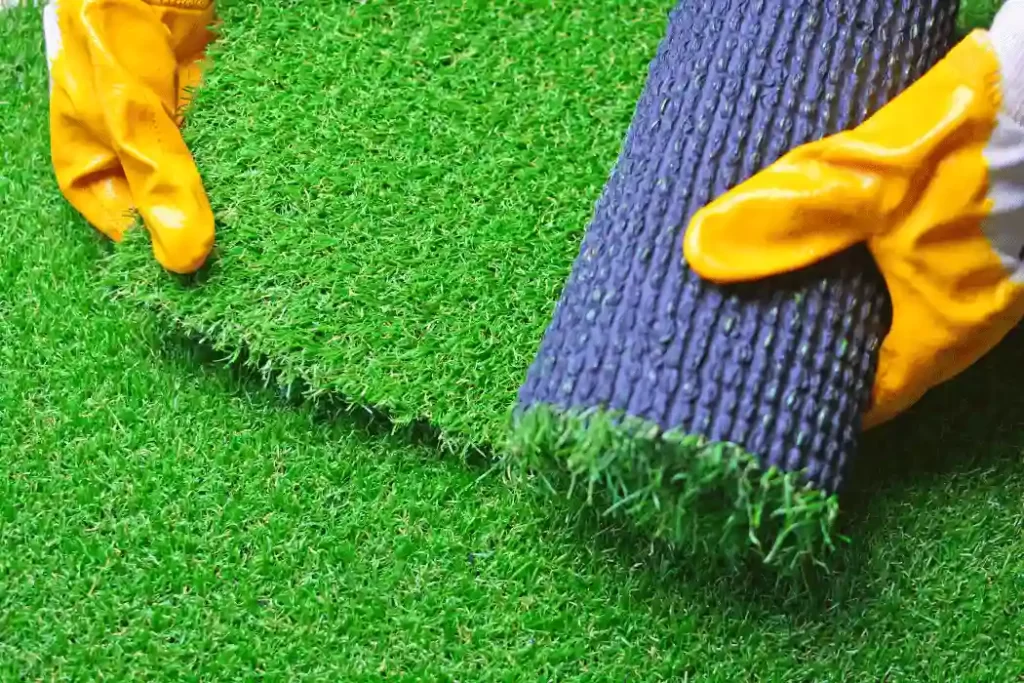Are you tired of maintaining a natural lawn that requires constant watering, mowing, and upkeep? Are you looking for a hassle-free solution to transform your landscape? Look no further than artificial turf installation. With its numerous benefits and advancements in technology, artificial turf has become a popular choice for homeowners and businesses alike. If you’re looking for a reliable source of knowledge on artificial turf installation to transform your landscape, you’ve come to the right place. In this article, we will explore the advantages of artificial turf, guide you through the installation process, and provide maintenance tips to help you create a beautiful and sustainable landscape.
Benefits of Artificial Turf Installation
Low Maintenance and Water Conservation
One of the primary advantages of artificial turf is its low maintenance requirements. Say goodbye to mowing, fertilizing, and watering your lawn regularly. Artificial turf eliminates the need for excessive water consumption, saving you money on your water bills and contributing to water conservation efforts. Additionally, you will no longer have to worry about weed control or applying pesticides, making it an environmentally friendly option.
Year-Round Greenery
Unlike natural grass that can turn brown and dull during dry seasons or cold winters, artificial turf offers year-round greenery. Regardless of the weather conditions, your lawn will maintain its vibrant color and lush appearance. Whether it’s a scorching summer or a freezing winter, you can enjoy a visually appealing landscape without any extra effort.

Enhanced Durability
Artificial turf is designed to withstand heavy foot traffic and various weather conditions. It is highly durable and can withstand intense sunlight, heavy rain, and even snow. With its ability to retain its shape and integrity over time, artificial turf provides a long-lasting solution for your outdoor space.
Safe and Comfortable Surface
Artificial turf provides a soft and comfortable surface that is ideal for children and pets to play on. Unlike natural grass, it eliminates the risk of muddy patches and uneven terrain, reducing the chances of slips and falls. Many artificial turf products are also designed with additional padding to enhance shock absorption, making it a safer option for recreational activities.
Aesthetically Pleasing
Artificial turf comes in a variety of styles, colors, and textures, allowing you to customize your landscape according to your preferences. Whether you prefer a perfectly manicured look or a more natural appearance, there is an artificial turf option to suit your needs. You can choose from different pile heights, blade shapes, and infill materials to create the desired aesthetic for your outdoor space.
Choosing the Right Artificial Turf
When selecting artificial turf for your installation, several factors should be considered to ensure you make the right choice.
Quality and Material
Opt for high-quality artificial turf that is designed to withstand UV radiation, extreme weather conditions, and heavy use. Look for products that are made from durable materials and have undergone rigorous testing to meet industry standards.
Pile Height and Density
The pile height refers to the length of the artificial grass blades. Choose a pile height that suits your desired appearance and the level of foot traffic your lawn will experience. Additionally, consider the density of the turf, as a denser surface will provide a more realistic look.
Color and Texture
Artificial turf is available in various shades of green, allowing you to select the color that best complements your surrounding landscape. Consider the texture of the turf as well, as some products mimic the look and feel of natural grass more effectively than others.
Preparing for Artificial Turf Installation
Before proceeding with the installation process, proper preparation is crucial to ensure the best results. Follow these steps to prepare your landscape for artificial turf installation.
Site Assessment and Measurement
Conduct a thorough site assessment to identify any potential issues or challenges. Measure the area accurately to determine the amount of turf required for your project.
Soil Preparation and Grading
Prepare the soil by removing any existing vegetation, rocks, or debris. Ensure the ground is properly graded to facilitate water drainage and prevent pooling.
Removing Existing Vegetation
Clear the area of existing vegetation, including grass, weeds, and roots. This step can be done manually or through the use of herbicides, depending on the size of the area.
Installing Weed Barrier and Base Materials
To prevent weed growth, install a weed barrier fabric over the prepared soil. This will create a barrier between the soil and the artificial turf. Next, add a layer of compacted base materials, such as crushed rock or decomposed granite, to create a stable foundation for the turf.
Artificial Turf Installation Process
Once the preparation is complete, it’s time to proceed with the artificial turf installation. Follow these steps for a successful installation.
Laying and Securing the Turf
Roll out the artificial turf over the prepared area, ensuring it is aligned correctly. Trim any excess material as needed. Secure the edges of the turf using landscape stakes or adhesive, ensuring a tight and secure fit.
Seaming and Adhesive Application
If your installation requires multiple rolls of artificial turf, you will need to seam them together. Use artificial turf seaming tape and adhesive to join the edges seamlessly. Follow the manufacturer’s instructions for the best results.
Infill Material Placement
Infill material is added to the artificial turf to provide stability, support the fibers, and enhance the overall performance. Spread the infill material evenly over the turf and use a power brush or broom to distribute it properly.
Power Brushing and Finishing Touches
Once the infill material is applied, use a power brush or broom to brush the turf fibers upright. This step helps achieve a natural appearance and ensures the infill material is evenly distributed. Trim any visible edges for a clean and polished look.

Maintaining Artificial Turf
While artificial turf requires minimal maintenance compared to natural grass, some routine care is necessary to keep it in optimal condition.
Regular Cleaning and Debris Removal
Regularly remove leaves, twigs, and other debris from the surface of the turf. This can be done using a leaf blower, rake, or stiff brush. This will prevent debris buildup and ensure proper water drainage.
Brushing and Fluffing the Fibers
Periodically brush or rake the turf fibers to keep them upright and prevent matting. This step will help maintain the natural look and feel of the artificial turf.
Handling Stains and Pet Waste
Promptly clean up any spills or stains on the artificial turf to prevent discoloration. Use a mild detergent and water solution or a recommended artificial turf cleaner. For pet waste, remove solid waste and rinse the affected area with water.
Seasonal Maintenance
Perform seasonal maintenance tasks to keep your artificial turf in optimal condition. This may include inspecting the infill material, checking for any signs of damage or wear, and addressing any necessary repairs.
Potential Challenges and Solutions
While artificial turf installation offers numerous benefits, there are some potential challenges that may arise. Here are some common issues and their solutions.
Drainage Issues
Inadequate or improper drainage can lead to pooling or water buildup on the turf surface. Ensure proper grading and installation of drainage systems to prevent this issue.
Fading or Discoloration
Excessive exposure to sunlight can cause artificial turf to fade or discolor over time. Choose turf products with built-in UV resistance to minimize this problem.
Odor Problems
If not properly maintained, artificial turf can develop unpleasant odors. Regular cleaning and addressing pet waste promptly will help prevent odor buildup.
Repair and Replacement
In the event of damage or wear, it is possible to repair or replace sections of artificial turf. Consult with a professional installer to assess the extent of the damage and determine the best course of action.
Conclusion
Artificial turf installation offers a convenient and visually appealing solution for transforming your landscape. With its low maintenance requirements, durability, and year-round greenery, artificial turf is becoming an increasingly popular choice. By following the proper installation and maintenance practices, you can enjoy a beautiful, hassle-free lawn that enhances the aesthetics of your outdoor space.


